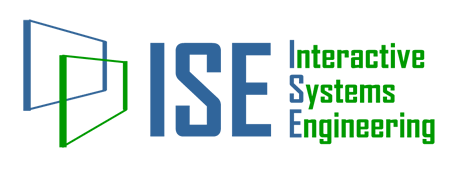Our research areas encompass a variety of fields focused on advancing technology and understanding its interaction with users. We strive to develop innovative solutions that enhance usability, accessibility, and user experience across interactive systems.

Methodologies, Models, and Specification Languages for User Interfaces

This research line can be considered transversal to the others, as it establishes the methodologies, models, and tools for developing user interfaces by applying the model-based paradigm, which the other lines apply and take into account. The work in this line is approached from a broad perspective, integrating proposals from both the fields of Software Engineering and Human-Computer Interaction, aiming to build bridges between these two well-established disciplines.
New Paradigms and Interaction Techniques
This research line aims to advance the exploration of new ways to interact with systems, providing more functionality while simultaneously reducing complexity for the user. Solutions have been developed in this line for the creation of Distributable User Interfaces (DUIs), enabling an application’s interface to be distributed across various devices, thereby expanding possibilities for the user. Current work also includes motion-based and gaze-based interaction. The goal is to break down the technological barriers that often exist between people and computer systems.


Ubiquitous Systems and Context-Aware Mobile Applications

This line addresses the challenge of developing applications for “off-the-desktop” environments. The trend of extending computing—and thus interaction with systems—beyond the traditional desktop computer emphasizes the growing importance of developing applications that allow interaction anytime and anywhere, using mobile devices that are also context-aware. This capability enhances the user experience, enabling users to focus more on the task at hand rather than the technology required to accomplish it. These environments are characterized by being multi-device, and the challenge in this research line is to make technology and multiple devices disappear, achieving an interaction that is intuitive and natural for the user.
Collaborative Environments for Group Work
Computer systems are evolving and increasing in complexity to meet the demands not only of individual users in isolation but also of workgroups that need to collaborate and share information to achieve common goals. This is the aim of this research line, which addresses the needs of collaborative environments for group work. Specifically, within this line, research is being conducted on e-learning environments, focusing on connectivity issues both online and offline.

